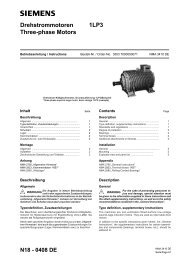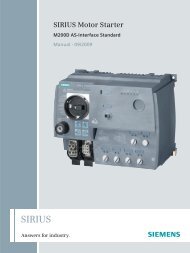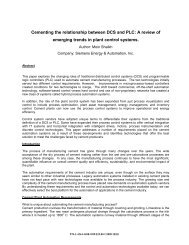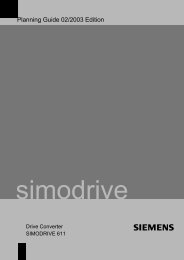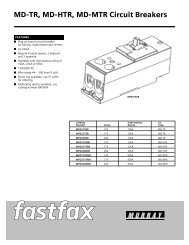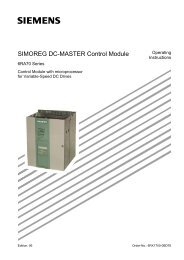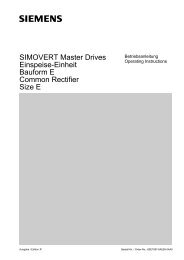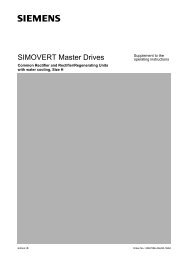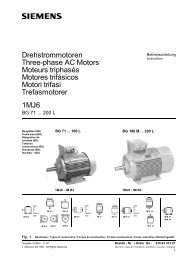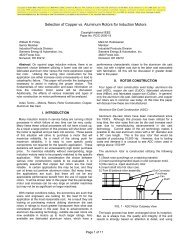WL Circuit Breakers - Siemens
WL Circuit Breakers - Siemens
WL Circuit Breakers - Siemens
You also want an ePaper? Increase the reach of your titles
YUMPU automatically turns print PDFs into web optimized ePapers that Google loves.
Exception Responses<br />
<strong>WL</strong> <strong>Circuit</strong> Breaker<br />
Except for broadcast messages, when a master device sends a<br />
query to a slave device, it expects a normal response. One of<br />
four possible events can occur from the master's query:<br />
1. If the slave device receives the query without a<br />
communication error, and can handle the query normally,<br />
it returns a normal response.<br />
2. If the slave does not receive the query due to a communication<br />
error, no response is returned. The master program will<br />
eventually process a timeout condition for the query.<br />
3. If the slave receives the query, but detects a communication<br />
error (parity or CRC), no response is returned. The master<br />
program will eventually process a timeout condition for<br />
the query.<br />
4. If the slave receives the query without a communication error,<br />
but cannot handle it (for example, if the request is to read a<br />
non-existent coil or register), the slave will return an exception<br />
response informing the master of the nature of the error.<br />
The exception response message has two fields that differentiate<br />
it from a normal response:<br />
Function Code Field: In a normal response, the slave echoes the<br />
function code of the original query in the function code field of the<br />
response. All function codes a most-significant bit (MSB) of 0 (their<br />
values are all below 80 hex). In an exception response, the slave<br />
sets the MSB of the function code to 1 (adds 80 hex to the function<br />
code). With the function code's MSB set, the master's application<br />
program can recognize the exception response and can examine<br />
the data field for the exception code.<br />
Data Field: In a normal response, the slave may return data or<br />
statistics in the data field (any information that was requested<br />
in the query). In an exception response, the slave returns an<br />
exception code in the data field. This defines the slave condition<br />
that caused the exception.<br />
Example: Request Message to slave<br />
The following is an example of a request to read Dataset 1<br />
(Diagnostic Information) from a COM16 slave device at MODBUS<br />
address 7. Dataset 1 has 8 registers, but in this example, the<br />
Master tries to read just 6 registers.<br />
07H Slave Address<br />
03H Function Code<br />
01H Register Start Address “High” (Dataset 1 address is<br />
0100 hex)<br />
00H Register Start Address “Low”<br />
00H Quantity of Registers “High”<br />
06H Quantity of Registers “Low” (6 registers is<br />
not valid)<br />
xxH CRC Check Code “Low”<br />
xxH CRC Check Code “High”<br />
Reply Message from slave<br />
The response returns the function code with the high bit set<br />
indicating an exception response. The Exception Code returned<br />
is 03 (Invalid Data Value). This exception code indicates that an<br />
illegal amount of data was specified for the requested Dataset.<br />
07H Slave Address<br />
83H Function Code<br />
03H Exception Code (Illegal Register Amount)<br />
xxH CRC Check Code “Low”<br />
xxH CRC Check Code “High”<br />
4/9 <strong>WL</strong> PROFIBUS/MODBUS Communication and Electronic Accessories




